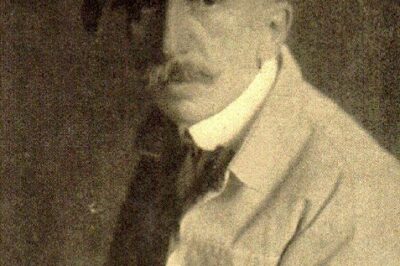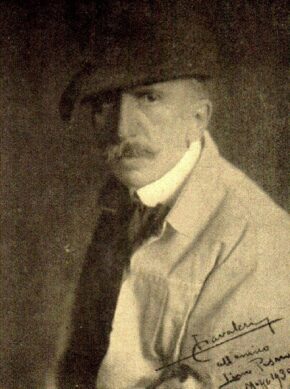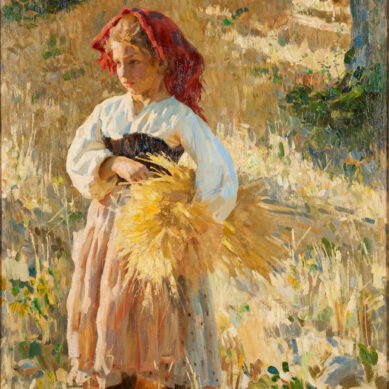You searched
Painter
Ludovico Cavaleri
Are you interested in the sales or the purchase of his artworks?
We buy works of this artist
and of other painters and sculptors from the 16th century to the first half of the 20th century
The Berardi gallery offers a free and without obligation service for evaluation of ancient and modern art . To find your way in the art market, very complex and full of nuances, it is better to rely on a professional consultant who can answer fast and concretely to your needs. The clarity of the answers will resolve effectively the need to estimate or sell an asset.
Contact us immediately without commitment
Answers also in 24 hours:
Ludovico Cavaleri
Ludovico Cavaleri
Ludovico Cavaleri was born in Milan in 1867. After completing his classical studies, he attended medical school, which he abandoned in 1888. From a young age he had a strong inclination towards art and decided to devote himself exclusively to painting, following the example of the Lombard landscape painters of the second half of the 19th century.
Landscape: a lyrical intimism
Setting his language immediately on an idyllic and spontaneous naturalism, Ludovico Cavaleri remained faithful for many years to an intimist style of painting, linked to country views and seascapes, which he treated with a loose brushstroke rich in light. In his poetic images one can read memories and notes akin to the suggestive lyricism of the Rivara School: Soggy grapes, Towards evening and Quiet (near Carrara) are the first three works he exhibited at the Turin Exhibition of 1890, launching a career rich in exhibitions.
Most of the painter’s exciting landscapes are evidence of his frequent travels between Lombardy, Liguria and Tuscany, where he would settle for several years, called to teach painting at the Academy of Carrara.
Bonaccia, Proxima nox and At Lerici appeared at the 1892 National Exhibition in Palermo, while in 1896 he was present at the Exhibition of Art and Flowers in Florence with some of his most important and lyrical early works: September Snow, Autumn Morning, Fruit and Impressions, paintings rich in atmospheric sensations and luministic variations that make him a painter linked to the naturalistic tradition, but deeply imbued with spirituality and symbolism, which are revealed above all in the decadent fin de siècle climate.
Symbolist and Art Nouveau influences: between painting and engraving
During these years, the artist not only concentrated on painting, but also began to work on drawing and etching, for various collaborations with newspapers, magazines and advertising companies. It was at this juncture that his evanescent, impressionistic brushwork of the early years began to absorb first Divisionist and then Secessionist influences.
His evocative and bright colour schemes, which always maintained the elegiac tone of his views, brought him gradual success with critics and the public. In 1901 he took part in the Venice Biennale with Mystic Silence and returned in 1903 with Evening Breeze. Solitude – San Francesco d’Assisi, Occidental sun and Tidal wave appeared at the Milan Exhibition for the Sempione Tunnel in 1906, while Pastoral and At night appeared at the 1907 Biennale.
“Artist of feeling”
Long filaments of colour or delicate dusty encounters with a Divisionist imprint construct these images that preserve the silence and isolation of the mountains and countryside in winter, as seen in Nocturne at the 1910 Venice Biennale. At the same time, the engravings appear hard and are dominated by a strong chiaroscuro structure. After the war, he began to exhibit again in a personal exhibition of almost two hundred works at the Galleria Pesaro in Milan, with an introduction by the critic Carlo Bozzi, who wrote of him: “He has the good taste to limit the subject of all his paintings to the motif, the moment of light, the time of the season, and yet this exhibition of his was a success of rare variety due to the diversity of the themes chosen and the different techniques adopted […], even though it reveals a preference for the misty silver light, the golden veil of autumn and the warm dust of sunset on the water”.
Lino Pesaro, following this line, has dubbed him an ‘artist of feeling’. In fact, Ludovico Cavaleri continued to prefer lyrical compositions throughout the 1920s, as can be seen in the subjects he exhibited at the 1920 Biennale: The Lone Tree, Silence and Cinerarie. He continued to exhibit until the end of the 1920s, including a solo exhibition at the 1924 Biennale. After teaching for several years at the Academy of Perugia, he returned to Cuvio in Lombardy, where he died as a displaced person during the war in 1942.
Elena Lago





